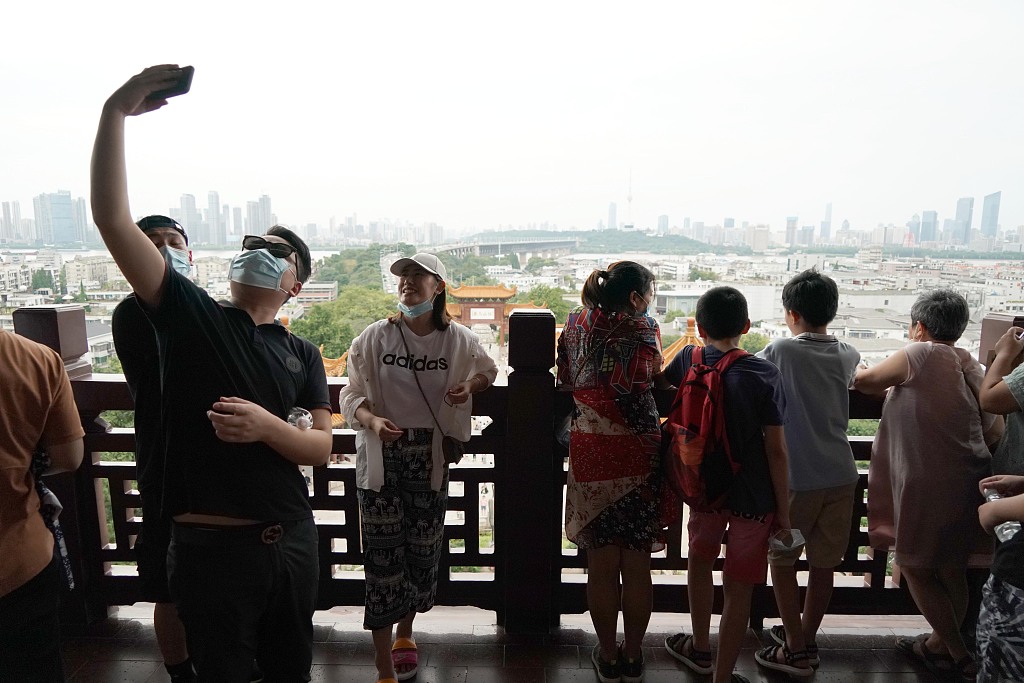Saturday marked the first day after the central Chinese city of Wuhan announced that it would offer free admission to 23 of its national A-level scenic spots to people across the country, and the move to save the city's coronavirus-hit tourism sector proved successful.
The city's landmark Yellow Crane Tower received over 12,000 visitors on Saturday from 8:30 a.m. to 5 p.m., and the number jumped more than three times that of the previous weekend.
According to the staff at the tourist site, since the reopening of the city in April, the Yellow Crane Tower has recorded an average of between 2,500 and 3,000 visitors daily.

Visitors at the Yellow Crane Tower in Wuhan, central China's Hubei Province, August 8, 2020. /CFP
Visitors at the Yellow Crane Tower in Wuhan, central China's Hubei Province, August 8, 2020. /CFP
"The free admission policy has boosted the visitor flow," an employee of the East Lake Scenic Area, another top tourist attraction in the city, said.
The staff member said that by 5 p.m. on Saturday, the daily number of visitors had reached 60,000, a sharp increase over previous weekends.
Zhao Bin, a Beijing resident who is on a work trip to Wuhan, has changed his travel plan upon hearing the news.
"After finishing my work here, I was about to take the plane back to Beijing. But the news of free visits to the scenic spots in the city changed my mind. I decided to stay here for the weekend," Zhao said.

Taxis line up in front of the Hankou Railway Station, ready to carry passengers, in Wuhan, central China's Hubei Province, August 8, 2020. /CFP
Taxis line up in front of the Hankou Railway Station, ready to carry passengers, in Wuhan, central China's Hubei Province, August 8, 2020. /CFP
Wuhan is not the only place that offers such a preferential policy. Nearly 400 A-level scenic spots in the province have opened to tourists from all over the country for free from August 8 until the end of the year, including public holidays.
In addition to expressing gratitude to those who have helped and supported the province during the epidemic outbreak, Wuhan has also implemented as powerful a strategy to revive the economy, Gong Jian, vice dean of the Wuhan Branch of China Tourism Academy, said.
These tourist sites will cap the number of visitors at 50 percent of the maximum daily capacity, and visitors from the country's low-risk areas need to make online reservations in advance and abide by health and safety regulations.
A-level refers to the rating categories used by Chinese authorities to determine the quality and service of a tourist attraction. There are altogether five categories from A to 5A, with 5A being the highest level, comprising the most significant and best-maintained tourist sites in the country.
(Cover: The Yellow Crane Tower in Wuhan, central China's Hubei Province, August 8, 2020. /CFP)